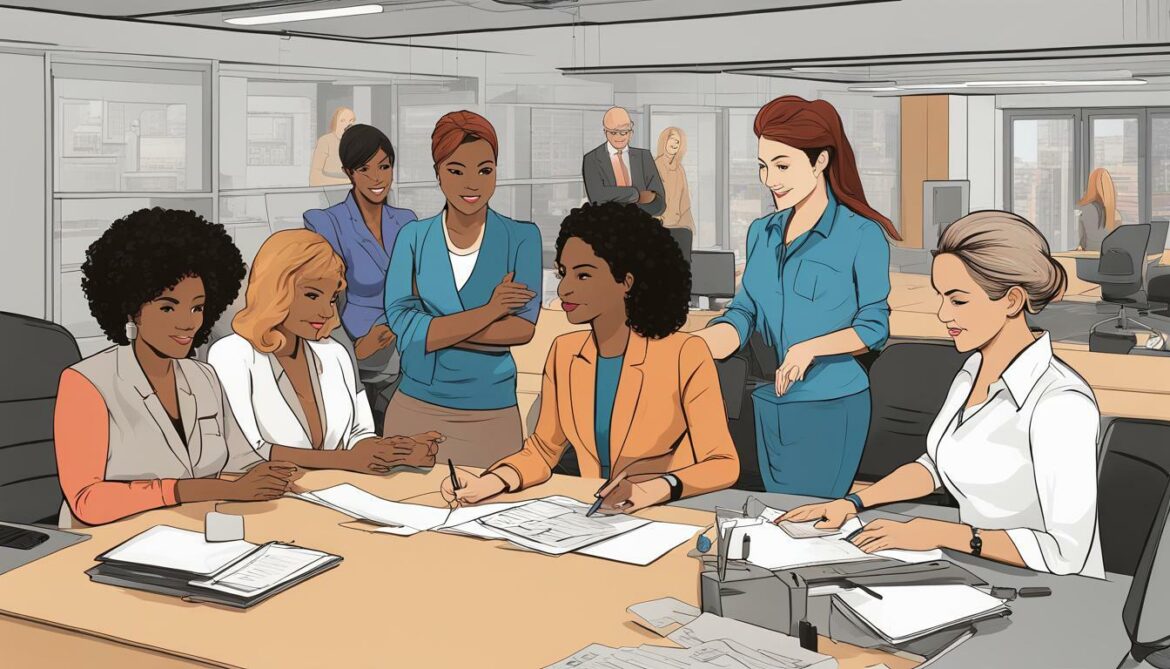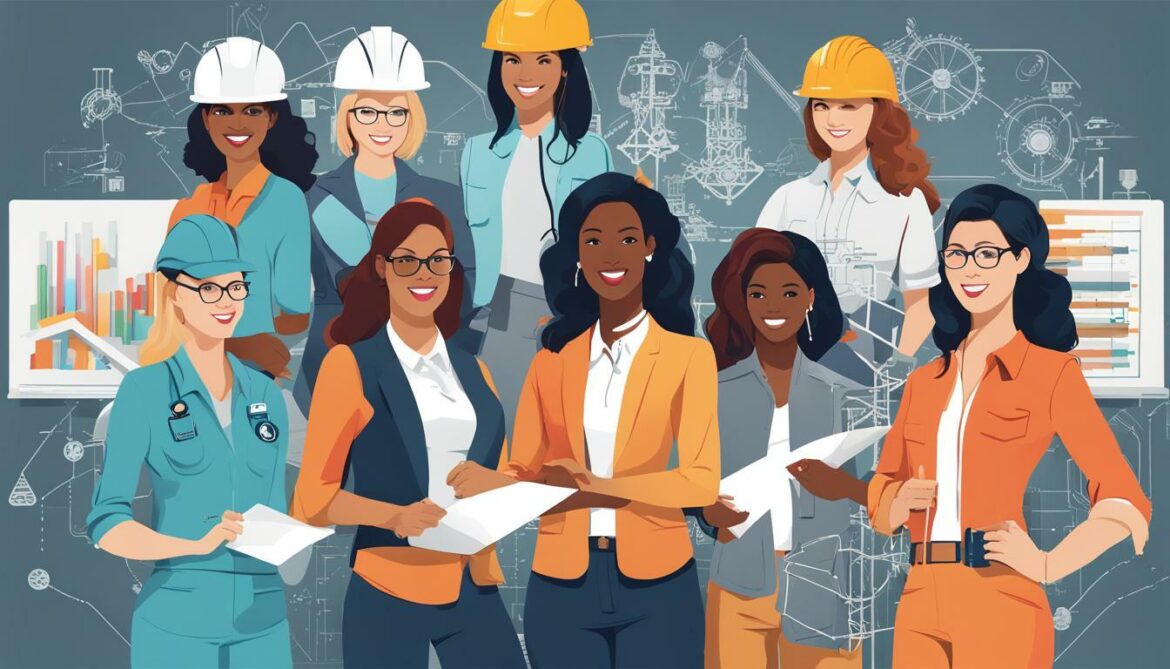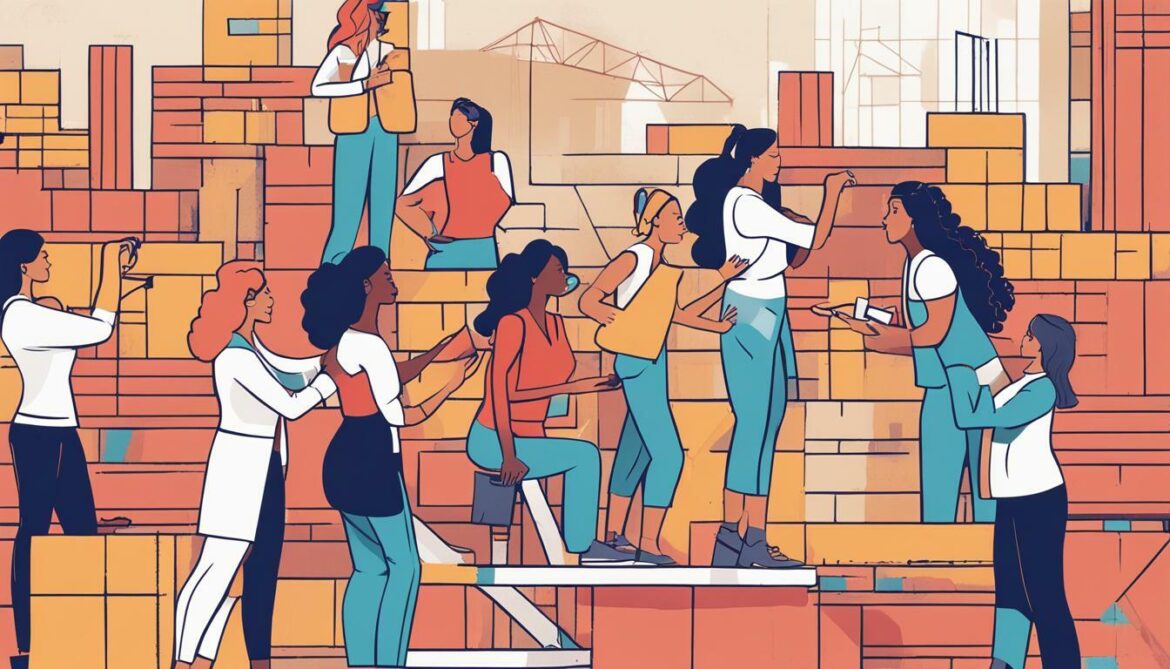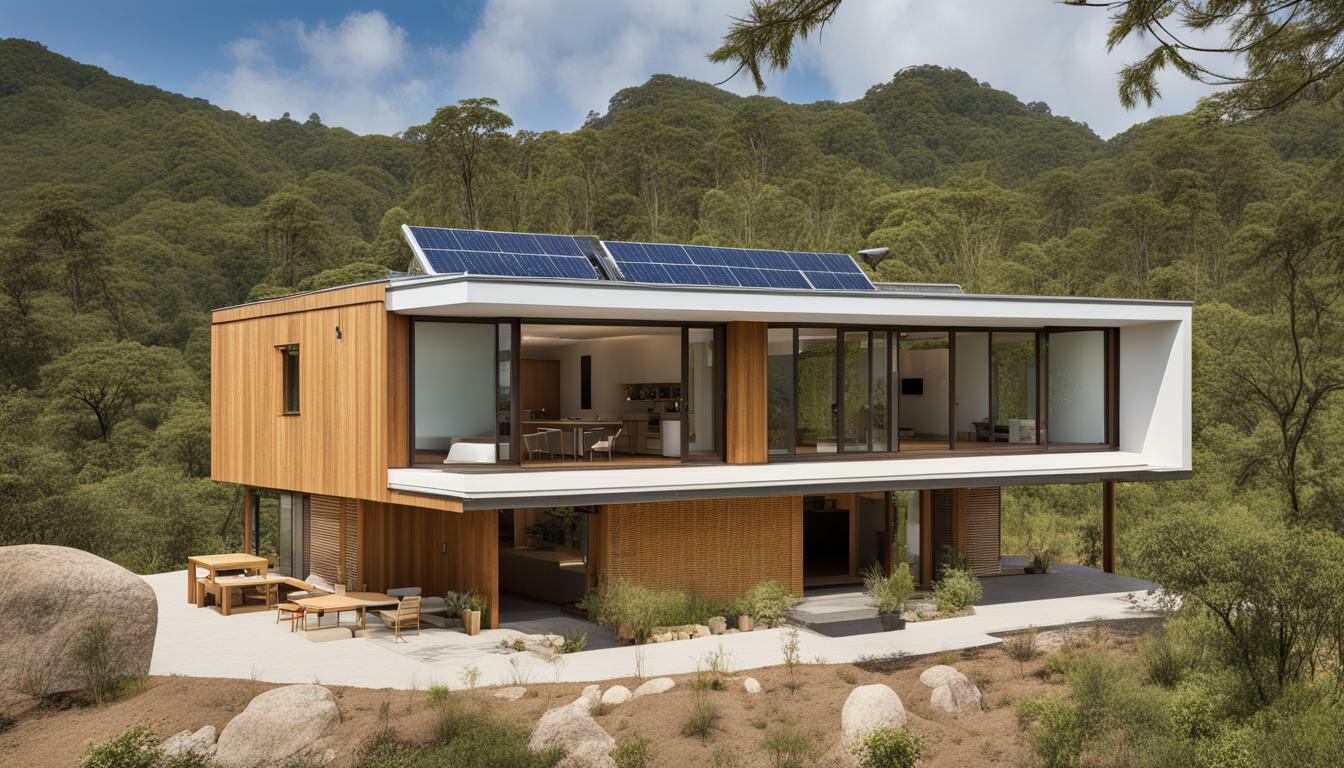Empowering Women in Engineering: Promoting Diversity in the Built Environment
The built environment plays a crucial role in our daily lives, from the homes we live in to the buildings we work in. It is essential that it is designed and constructed in a way that is inclusive for all individuals. This is why promoting diversity in the built environment is crucial. By fostering diversity and inclusion in the industry, we can create a more equal and successful industry that benefits everyone.
Diversity in the built environment encompasses a range of aspects, including inclusive practices, promoting underrepresented groups, ensuring accessibility in the built environment, and diverse perspectives. By promoting these elements, we can create a more diverse workforce that reflects the communities we serve, and we can ensure that everyone has the opportunity to succeed in the industry.
Key Takeaways:
- Promoting diversity in the built environment is essential for creating a more equal and successful industry.
- Diversity and inclusion in the industry encompass various elements, such as inclusive practices, promoting underrepresented groups, ensuring accessibility in the built environment, and diverse perspectives.
- Fostering diversity in the industry can lead to a more diverse workforce that reflects the communities we serve and provides opportunities for everyone to succeed.
The Benefits of Diversity in the Built Environment
Promoting diversity in the built environment is essential to creating spaces that are welcoming and accessible to all individuals. A key aspect of promoting diversity is embracing diverse perspectives. When individuals from different backgrounds and experiences come together, it leads to innovative solutions and better problem-solving. This is particularly important in engineering, where unique and creative approaches can make all the difference.
Inclusive design is another fundamental aspect of promoting diversity in the built environment. Inclusive design ensures that buildings, spaces, and products are accessible to everyone, regardless of their physical abilities or limitations. This means considering factors such as mobility, vision, and hearing, and designing spaces that are intuitive and easy to navigate for everyone. Inclusive design not only benefits individuals with disabilities but also enhances the overall user experience for everyone.
Research has shown that embracing diversity in the workplace can lead to better performance, increased creativity, and improved decision-making. By fostering a diverse and inclusive culture, organizations can attract and retain a diverse workforce. This, in turn, leads to a more innovative and successful industry.

Embracing diversity in the built environment is not just the right thing to do, it’s the smart thing to do. By promoting diversity and inclusive practices, we can create a more innovative, successful industry that benefits everyone.
Challenges in Achieving Diversity and Inclusion
Promoting diversity and inclusion in the built environment is not without its challenges. Despite progress made in recent years, underrepresented groups, including women, still face barriers in entering and advancing in the industry.
One major challenge is the lack of representation and visibility of underrepresented groups in the industry. This leads to a lack of diverse perspectives in decision-making processes and can perpetuate the status quo.
Another challenge is the persistence of unconscious bias and discrimination. Many organizations may have policies in place to promote diversity and inclusion, but these can be hampered by unconscious bias and discrimination in recruitment and promotion practices.
Furthermore, underrepresented groups may face additional challenges such as a lack of access to networks, mentors, and opportunities for professional development. This can make it difficult for them to advance in their careers and thrive in the industry.
Addressing these challenges requires a concerted effort to promote underrepresented groups and create a more inclusive industry. This can include initiatives such as targeted recruitment and mentoring programs, ensuring diverse representation in leadership positions, and educating industry professionals on unconscious bias and discrimination.
Promoting Diversity in the Built Environment and ensuring inclusion for all individuals is crucial for creating a thriving and equitable industry.

Empowering Women in Engineering
Empowering women in engineering is a crucial aspect of promoting diversity in the built environment. Women have historically been underrepresented in the field of engineering, and initiatives promoting their inclusion are necessary to create a more diverse workforce.
One successful initiative is the Women in Engineering Society, which provides support, training, and networking opportunities for women in engineering. The society encourages women to pursue careers in engineering and provides a platform for them to share their experiences and successes.

Another example is the Athena SWAN Charter, a framework that aims to advance gender equality in higher education and research. The charter encourages organizations to adopt practices that promote gender equity, such as providing mentoring and career development opportunities for women.
Women in engineering have made significant contributions to the field, such as Hedy Lamarr, who invented the frequency-hopping spread spectrum, which laid the foundation for modern Wi-Fi, GPS, and Bluetooth technologies. Ada Lovelace is another notable figure, known for her work on Charles Babbage’s proposed mechanical general-purpose computer, the Analytical Engine.
Encouraging and supporting the professional development and advancement of women in engineering is a vital step towards achieving diversity and inclusion in the built environment. By promoting underrepresented groups, we can tap into diverse perspectives, drive innovation, and create a more equitable and successful industry.
Inclusive Practices in the Built Environment
Promoting diversity in the built environment requires implementing inclusive practices. This means creating a workplace culture that respects, values and welcomes differences. Enabling a diverse workforce to feel included fosters innovation and creativity, it reduces turnover and absenteeism, and most importantly, it is the right thing to do. Inclusive practices create a supportive environment that empowers employees to perform at their best and allows them to bring their whole selves to work.
One way to promote inclusive practices is to create policies that promote diversity. This includes developing and implementing policies that promote equal opportunity and fair treatment of all employees, regardless of their gender, ethnicity, or background. For example, implementing flexible work hours and offering parental leave can help support employees with family responsibilities and attract a diverse workforce.
Recruiting and retaining a diverse workforce is another way to promote inclusive practices. This involves sourcing talent from a variety of backgrounds and creating a hiring process that is equitable and fair. Employers can also create mentorship programs and career development opportunities to support career advancement for underrepresented groups.
Leadership plays a crucial role in fostering an inclusive culture. Leaders should be accountable for promoting and supporting diversity and inclusion, setting an example for others to follow. This can include setting goals and targets for diversity and inclusion, leading by example, and holding managers responsible for promoting diversity and inclusivity in their teams.

Overall, promoting inclusive practices in the built environment is essential to creating a diverse workforce. By creating a supportive and respectful workplace culture, employing equitable recruitment and hiring practices, and ensuring strong leadership, employers can promote diversity and inclusion in their organizations. This, in turn, can lead to increased innovation, creativity, and success in the industry.
Ensuring Accessibility in the Built Environment
Creating an accessible built environment is crucial in promoting diversity and social equality in construction. It is essential to design and construct spaces that are accessible to individuals with disabilities and ensure that they can easily access services and facilities. These inclusive practices are important not only for the individuals directly affected but for the community as a whole.
Accessibility considerations should be integrated into the design and planning process right from the start. This includes making sure that buildings are wheelchair accessible and that there are no barriers to entry for people with disabilities. Other considerations should be given to the use of colour and contrast, lighting, and signage, to ensure ease of navigation and use for everyone.
| Benefits of Accessibility in the Built Environment |
|---|
| Diversity and Inclusion: Ensuring accessibility in the built environment promotes diversity and social equality in construction. |
| User Experience: Accessible spaces promote a better user experience for everyone, whether they have a disability or not. |
| Legal Requirements: Accessibility standards are mandated by law and ensure that everyone has equal access to services and facilities. |
Legislation is in place to ensure that accessibility standards are met in the built environment. It is essential to follow these guidelines to ensure that everyone has equal access to services and facilities. The Disability Discrimination Act (DDA) sets out the legal requirements for accessibility in the UK.

Creating an accessible built environment requires collaboration and partnerships between architects, planners, developers, and government bodies. By working together, we can create a more inclusive and accessible future for everyone.
Promoting Collaboration and Partnerships
Promoting diversity in the built environment requires collaboration and partnerships between industry associations, educational institutions, and government bodies. By working together, these organizations can create opportunities for underrepresented groups and foster a more inclusive industry.
Industry associations are key players in promoting diversity and inclusion in the built environment. They can provide networking opportunities, mentorship programmes, and resources to support the advancement of underrepresented groups. For example, the National Association of Women in Construction (NAWIC) provides programmes and support to women in the construction industry.
Similarly, educational institutions play a critical role in promoting diversity and inclusion in the built environment by providing education and training to the next generation of professionals. This includes developing curricula that incorporate diverse perspectives and promoting the participation of underrepresented groups in STEM fields.
Government bodies also have an important role in promoting diversity and inclusion in the built environment. Through policies and regulations, they can drive change and create a more equitable industry. For example, the UK government has set a target for women to represent at least 20% of engineering graduates by 2030, and provides funding for initiatives to support women in engineering.
Overall, collaboration and partnerships are key to promoting diversity and inclusion in the built environment. By working together, industry associations, educational institutions, and government bodies can create a more inclusive industry that promotes the participation and advancement of underrepresented groups.

Conclusion
As we move towards a more equitable future, promoting diversity in the built environment is vital. Empowering women in engineering and promoting underrepresented groups are key elements of this movement. Inclusive practices and ensuring accessibility within the built environment also play a crucial role in creating a diverse and inclusive industry.
Collaboration and partnerships among industry associations, educational institutions, and government bodies can help create opportunities for underrepresented groups and foster a more inclusive industry. By promoting diversity and inclusion in the built environment, we can benefit from diverse perspectives, innovative solutions, and a more successful industry.
Join the Movement
Let’s work towards a future where the built environment is accessible, welcoming, and promotes diversity and inclusion. Together, we can create a more equitable and successful industry. Join the movement by promoting diversity in the built environment.
FAQ
Q: What is the importance of promoting diversity in the built environment?
A: Promoting diversity in the built environment is crucial for creating a more equitable and successful industry. It ensures that a diverse range of perspectives are incorporated into decision-making processes, leading to innovative solutions and better problem-solving. Additionally, promoting diversity helps to create a workforce that is representative of the community it serves, fostering inclusivity and social equality in construction.
Q: How can inclusive practices contribute to a diverse workforce in the built environment?
A: Inclusive practices play a vital role in creating a diverse workforce in the built environment. By implementing strategies for recruiting and retaining individuals from underrepresented groups, organizations can ensure that their workforce is reflective of the wider community. Additionally, fostering an inclusive culture within organizations, with strong leadership support, helps to create an environment where all employees feel valued and can contribute their unique perspectives.
Q: What challenges exist in achieving diversity and inclusion in the built environment?
A: Achieving diversity and inclusion in the built environment comes with its fair share of challenges. One of the main barriers is the underrepresentation of certain groups, such as women in engineering. Overcoming these challenges requires initiatives and policies that address systemic barriers, provide equal opportunities for professional development, and promote diversity at all levels of the industry.
Q: How can we empower women in engineering to promote diversity?
A: Empowering women in engineering is essential for promoting diversity in the built environment. This can be achieved through various initiatives, programs, and policies that support the professional development and advancement of women in the field. By showcasing inspiring stories of successful women in engineering, we can encourage more women to pursue careers in this industry and create a more diverse and inclusive workforce.
Q: Why is ensuring accessibility in the built environment important for promoting diversity?
A: Ensuring accessibility in the built environment is a crucial aspect of promoting diversity and social equality in construction. By designing and constructing spaces that are accessible to individuals with disabilities, we create an inclusive environment that welcomes individuals from all backgrounds. Legislation and regulations play a vital role in driving accessibility standards and ensuring that no one is excluded from accessing and enjoying the built environment.
Q: How can collaboration and partnerships promote diversity in the built environment?
A: Collaboration and partnerships are instrumental in promoting diversity in the built environment. Industry associations, educational institutions, and government bodies can work together to create opportunities for underrepresented groups and foster a more inclusive industry. By joining forces, different stakeholders can share resources, knowledge, and networks to drive change and create a more diverse and equitable future for the built environment.






